Weights are classified according to accuracy class as follows
E1, E2, F1, F2, M1, M1-2, M2, M2-3, M3
Where E1 is the highest accuracy and M3 is the lowest accuracy
Maximum Permissible Error is the Maximum deviation allowed from its Nominal Value.
All Values in the below table are in mg.
The reference document for the below Table is OIML-R-111-1
Classification of Weighing Balance
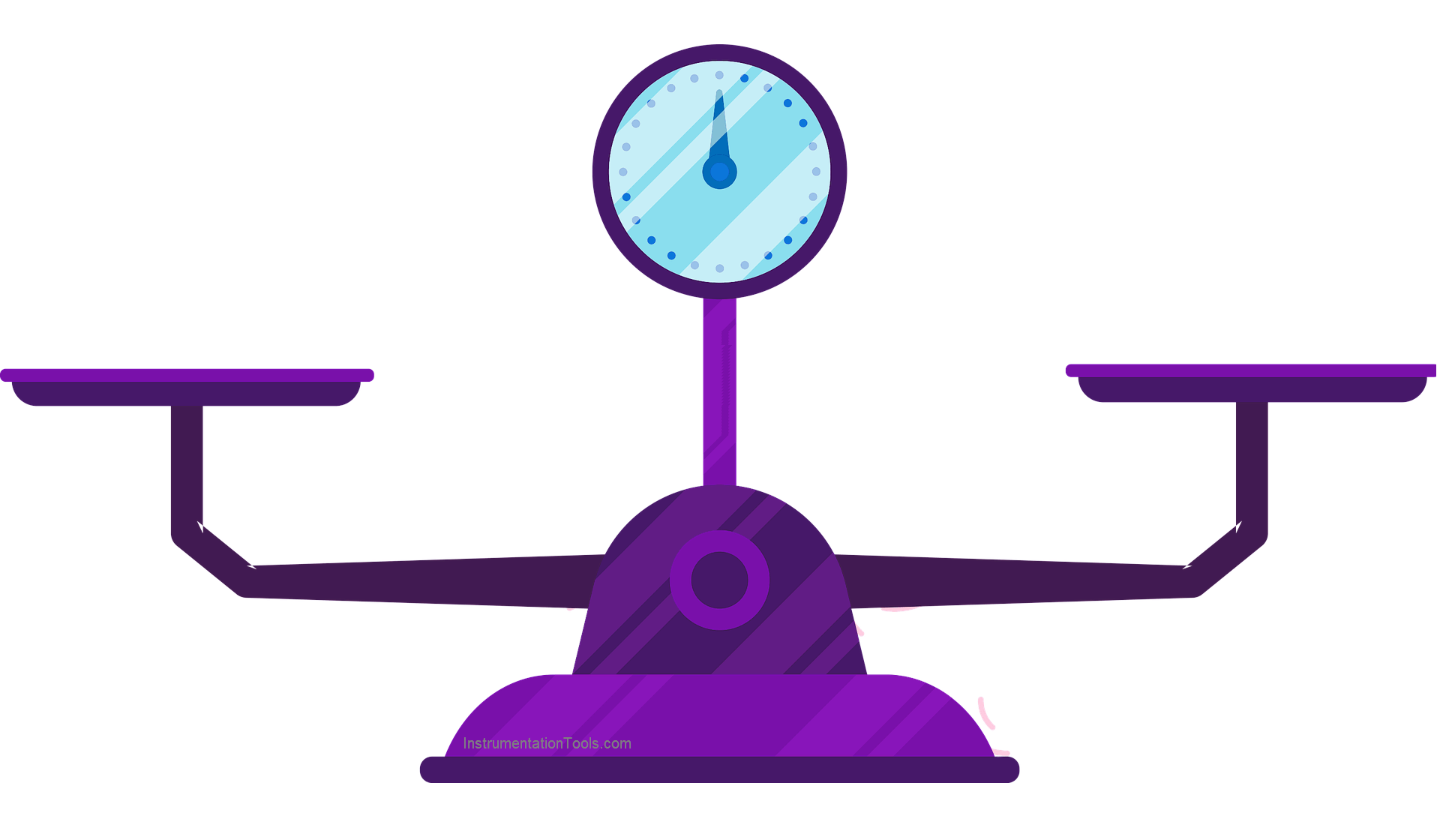
Example:
For an E1 class weight of 1 g, weight should be between 1.000010 g to 0.99999 g as the Maximum permissible error of an E1 class weight of 1 g is ±0.000010 g (±0.01 mg)
For an M3 class weight of 1 g, weight should be between 1.01 g to 0.9 g as the Maximum permissible error of an M3 class weight of 1 g is ±0.01 g (±10mg)
Weight should satisfy other conditions also mention in OIML R-111-1 like Shape, Material, Markings, etc.
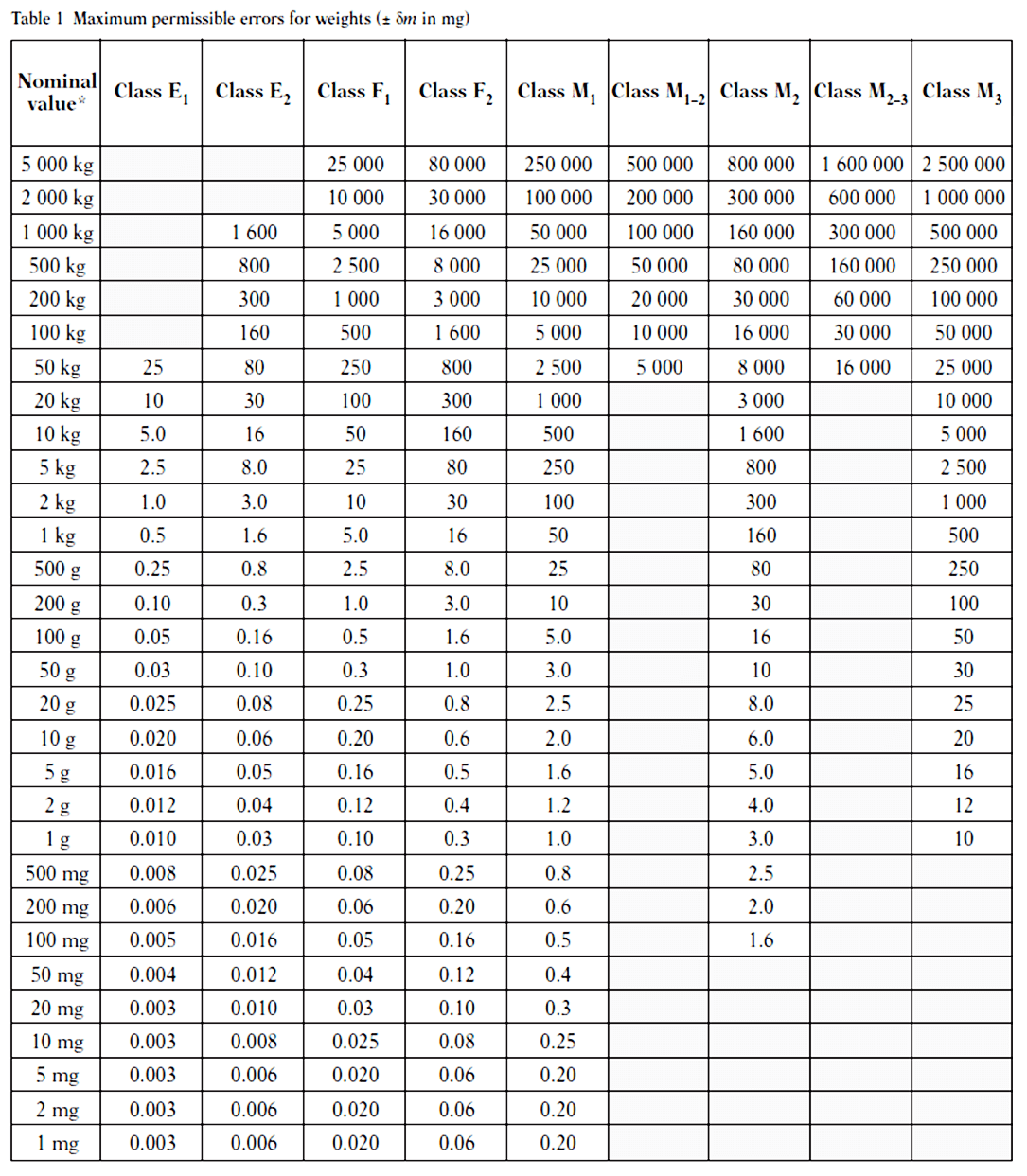
Weighing balances are classified according to accuracy class as Class I, II, III, and IV based on minimum readability (Resolution/Least count)
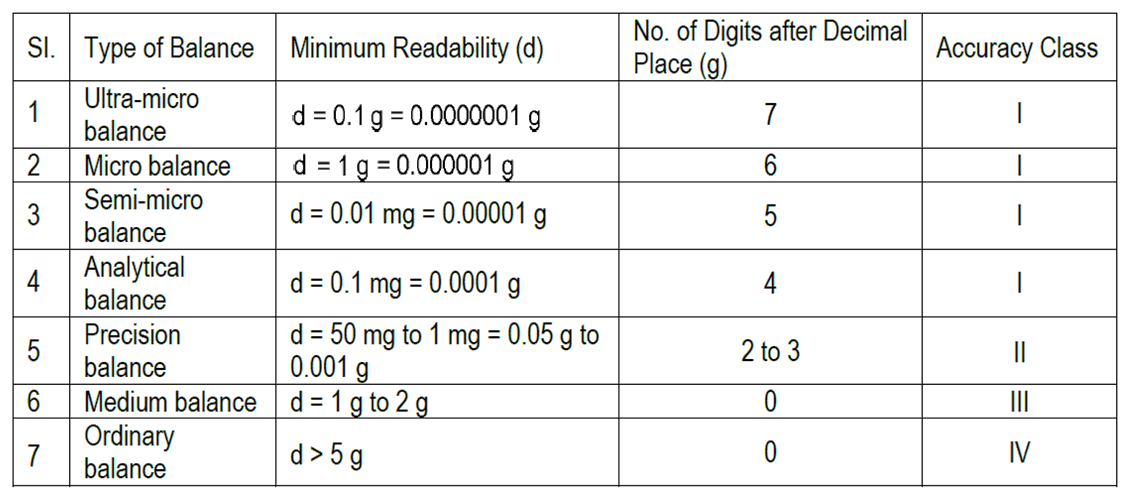
Weighing Balances are also classified according to the “e” value
e value is the verification of scale interval.
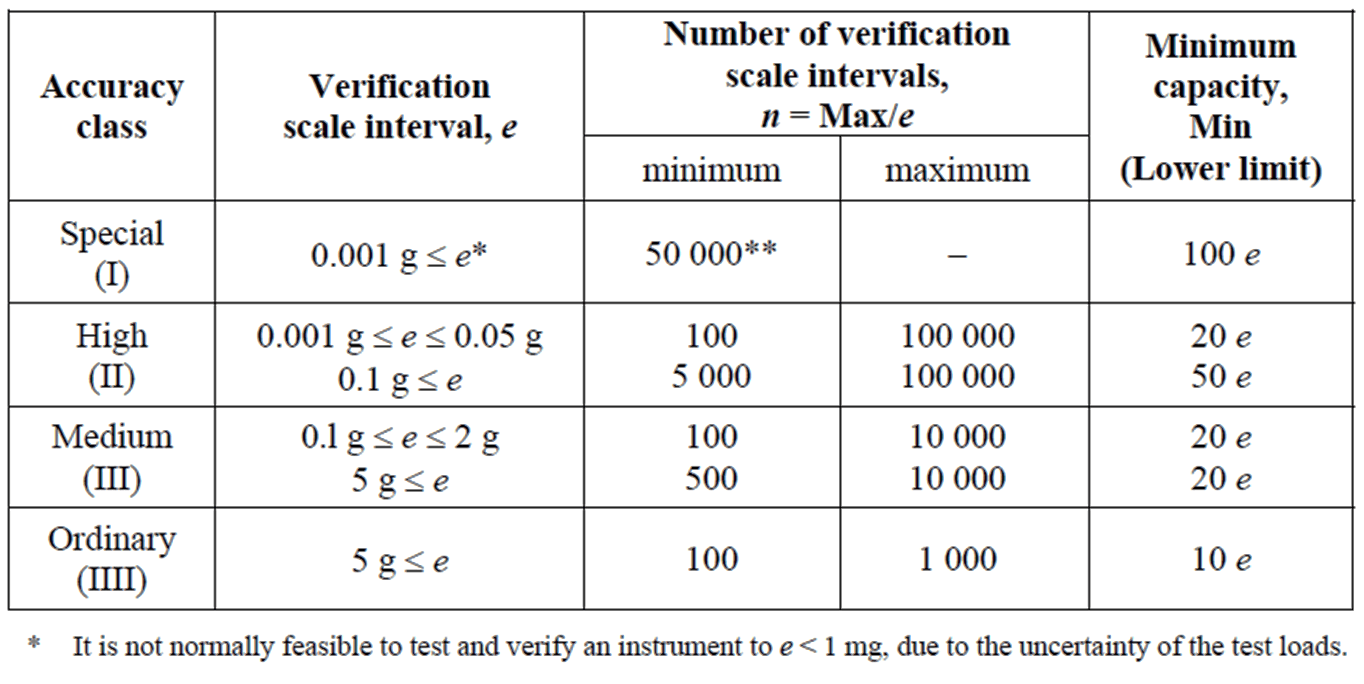
** For an instrument of class I with d < 0.1 mg, n may be less than 50 000.
Generally, e value is written on weighing balance or in manual.
Also, we can calculate the e value.
If Weighing Balance is graduated without an auxiliary indicating device then, e=d (where e is verification of scale interval and d is least count)
The least Count of Weighing Balance is in multiple of 1,2,5
I.e. 1g, 2g, 5g, 0.1 g, 0.2g, 0.5g
e value remains same for complete set of multiple of 1,2,5
e value = 10 times d value for multiple 1
e value = 5 times d value for multiple 2
e value = 2 times d value for multiple 5
This criteria does not apply for Accuracy Class I balance with d< 1 mg, where the e value is always 1 mg.

Values for Maximum permissible errors on initial verification are as follows:
The maximum permissible errors of weighing balance in service shall be twice the maximum permissible errors on initial verification.

Let’s take an example and summarize Table 3, 4, 5
Weighing Balance of maximum capacity of 200 g with resolution d = 0.001 g
From Table 4 for d=0.001 g, e =0.01 g
From Table 3, the Number of verification intervals n = max/e
I.e n=200/0.01 = 20,000
(All values should be in the same unit)
e value for the given balance is 0.01 g which lies in the criteria for accuracy class II 0.001g <=e <0.05g
n value for accuracy class II with e = 0.01 g should be minimum 100 and maximum 100000. For our example n = 20,000 which fits in above criteria.
Therefore, the given balance is in accuracy class II.
Also, from Table 2, the above balance is in accuracy class II
From Table 3, the Minimum weighing capacity of balance in 20e,
20 X 0.01= 0.2 g i.e. 200 mg
Linearity error in balance
| Weight in g | n = weight/e | MPE* Initial Verification | MPE** Service |
| 0.2 | 20 | 0.005 g | 0.01 g |
| 0.5 | 50 | 0.005 g | 0.01 g |
| 1 | 100 | 0.005 g | 0.01 g |
| 2 | 200 | 0.005 g | 0.01 g |
| 5 | 500 | 0.005 g | 0.01 g |
| 10 | 1000 | 0.005 g | 0.01 g |
| 20 | 2000 | 0.005 g | 0.01 g |
| 50 | 5000 | 0.005 g | 0.01 g |
| 100 | 10000 | 0.01 g | 0.02 g |
| 200 | 20000 | 0.01 g | 0.02 g |
*MPE is the maximum permissible error on initial verification for class II balance
From Table 5,
For load m, n value is between 0 to 5000, then MPE is ± 0.5e
I.e. 0.5 X 0.01 = 0.005 g
For load m, n value is between 5000 to 20000, then MPE is ± 1e
I.e. 1 X 0.01 = 0.01 g
For load m, n value is between 20000 to 100000, then MPE is ± 1.5e
I.e. 1.5 X 0.01 = 0.015 g
** MPE for balance in service is 2 times of MPE for initial verification
So, If the Linearity error of the above weighing balance is below 0.01 g till 50 g, and below 0.2 g above that, then above is in accuracy class II.
Otherwise, Weighing Balance is out of accuracy.
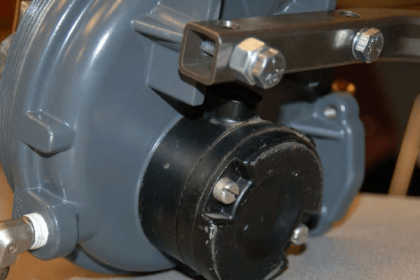

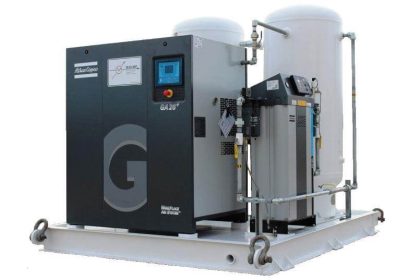



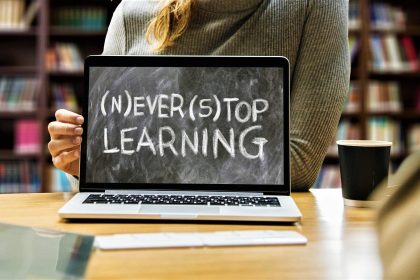






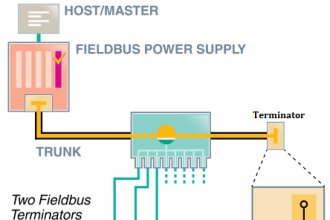
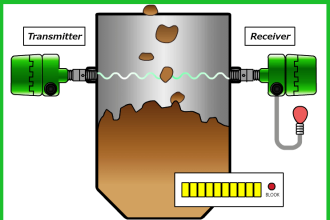


CAN YOU PLEASE ELABORATE ON AUXILIARY INDICATING DEVICE
ALSO TABLE THAT USES THE LEAST COUNT TO DETERMINE THE ACCURACY CLASS
CAN YOU GIVE ME THE REFERENCE DOCUMENT
Thank you for sharing this information, it is very helpful.
Could you please share your reference for table 2?
Is it based on a legal document? ISO? OIML? USP? EP?